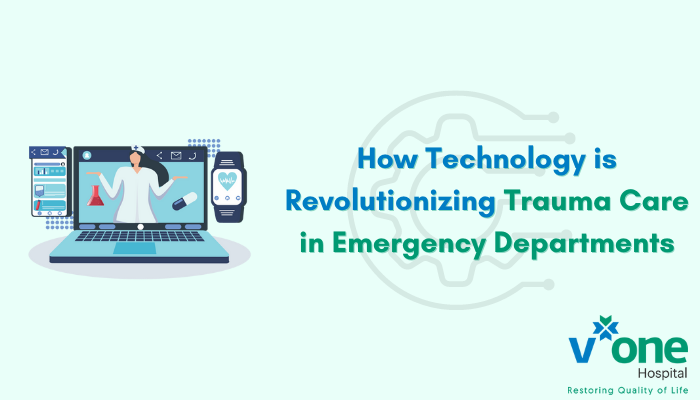How Technology is Revolutionizing Trauma Care in Emergency Departments
The incorporation of technology in healthcare has revolutionized the way healthcare professionals approach patient care, from the diagnosis of illnesses to the treatment of injuries. In emergency departments, where every second counts, technology has proven to be a vital tool in providing trauma care.
What is Trauma Care?
Trauma care is the management of acute injuries or illnesses that can threaten the life of the patient. The role of technology in trauma care in emergency departments cannot be overemphasized. Over the years, various technologies have been used in trauma care and their impact on patient outcomes is evident.
Telemedicine in Trauma Care
Telemedicine is a technology that allows healthcare professionals to provide medical care remotely. In emergency departments, telemedicine is able to connect physicians with patients who may be in remote or rural areas, where access to specialized medical care may be limited. Telemedicine has also been used in emergency departments to connect trauma surgeons with emergency room physicians for consultation and treatment planning. This technology enables physicians to make timely, informed decisions on patient management, which can result in better patient outcomes.
Radiology and Imaging
Radiology and imaging technologies are important tools in the diagnosis and management of trauma patients in emergency departments. Radiography, CT scans, and MRI scans are all immensely helpful in detecting and evaluating the extent of internal injuries, fractures, and other conditions that may be present in trauma patients. The use of these technologies can help physicians make informed decisions on the appropriate course of treatment for the patient, leading to better outcomes.
Hemodynamic Monitoring
Pulmonary Artery Catheters (PACs) have revolutionized our clinical understanding of hemodynamic function and help improve outcomes in the ICU. While echocardiography can provide critical information regarding vascular volume status, cardiac physiology, and anatomy, arterial pressure waveform monitors help estimate cardiac output.
Point-of-Care Testing
The technology of point-of-care testing allows healthcare professionals to quickly analyze patient samples at the bedside, without the need for laboratory analysis. In emergency departments, point-of-care testing is used to analyze blood samples for glucose, electrolytes, and other indicators of patient health. This technology helps physicians quickly identify any abnormalities in patient health, enabling them to make timely decisions on patient management.
Electronic Medical Records
Electronic Medical Records (EMRs) are digital records of a patient’s medical history, which can be accessed by authorized healthcare professionals. In emergency departments, EMRs are used to store and manage patient data, including medical history, test results, and medication records. The use of EMRs enables physicians to quickly access a patient’s medical history, which can be critical in making timely decisions on patient management.
Operative Techniques
With modern medical advancements, peripheral interventions have proved particularly helpful in difficult-to-reach areas and help gain hemostatic control. Gastrointestinal anastomotic staplers and tissue sealing devices also have advantages over hand-sewn anastomoses, and vacuum-assisted closure (VAC) devices are also immensely helpful.
Robotics in Trauma Care
Robotics is a technology that has been used in many areas of healthcare, including trauma care in emergency departments. In trauma centers, robots are used to perform surgical procedures, such as endovascular surgery, that require precision and accuracy. These robots are controlled by surgeons, who can operate them remotely, allowing for a greater degree of precision and accuracy than would be possible with traditional surgery.
Wearable Technology
Wearable technology, such as smartwatches and fitness trackers, has become increasingly popular in recent years. But these are more than just a fashion statement. In emergency departments, wearable technology can be used to monitor patient vital signs, such as heart rate and blood pressure. This technology can alert physicians to any abnormalities in patient health, allowing them to make timely decisions on patient management.
Organ Support
Multiple organ failure is one of the leading causes of mortality after severe trauma. Advances in medical care help support and replace dysfunctional organs. Extracorporeal Membrane Oxygenation (ECMO), circulatory and ventricular assist devices, intra-aortic balloon pumps (IABPs), ventilators, and renal and liver replacement therapies truly mark the horizon of technological advancement.
Technology has truly reshaped the way we approach trauma care in emergency departments. From telemedicine to robotics, technology has proven to be a vital tool in the diagnosis and treatment of trauma patients. Its use in trauma care helps physicians make timely decisions on patient management, ultimately resulting in better patient outcomes. And as technology continues to advance, its role in trauma care will only become more important, enabling physicians to provide better care to patients in emergency departments.

